The data for 2011 US healthcare spending was reported in the January issue of Health Affairs. Below are some graphs showing how spending was distributed across the different categories of healthcare services in the years 2000, 2007, and 2011, as well as who paid for the spending. (My analyses and commentary follow these graphs. The source for all graphs is Health Affairs, 32, no. 1 (2013):87-99)
What Healthcare Spending Went For: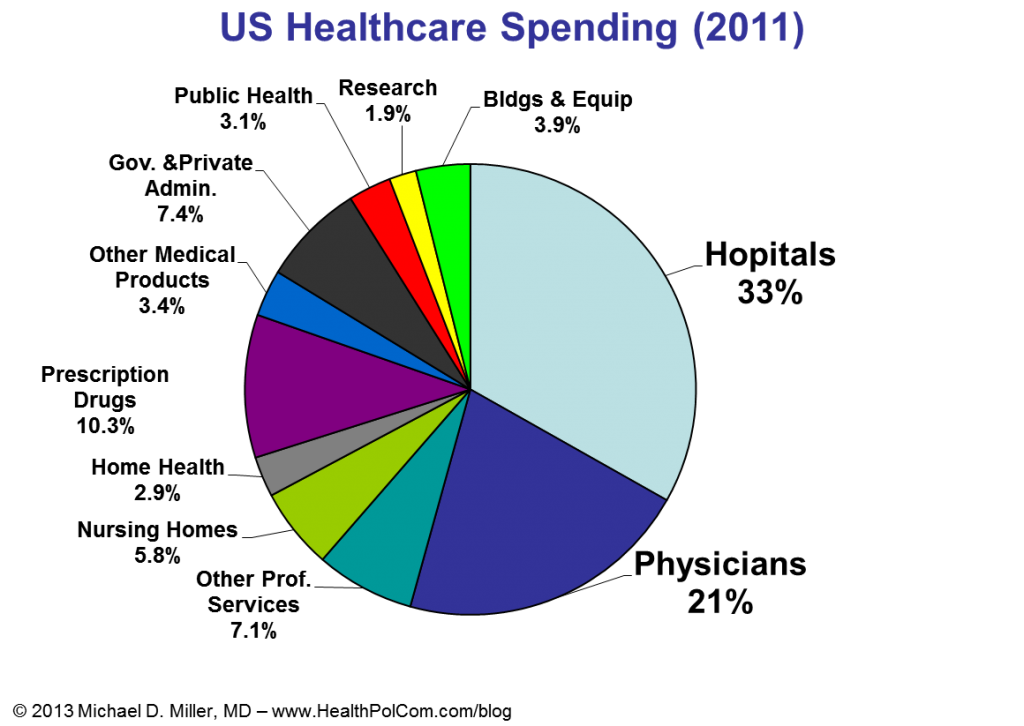
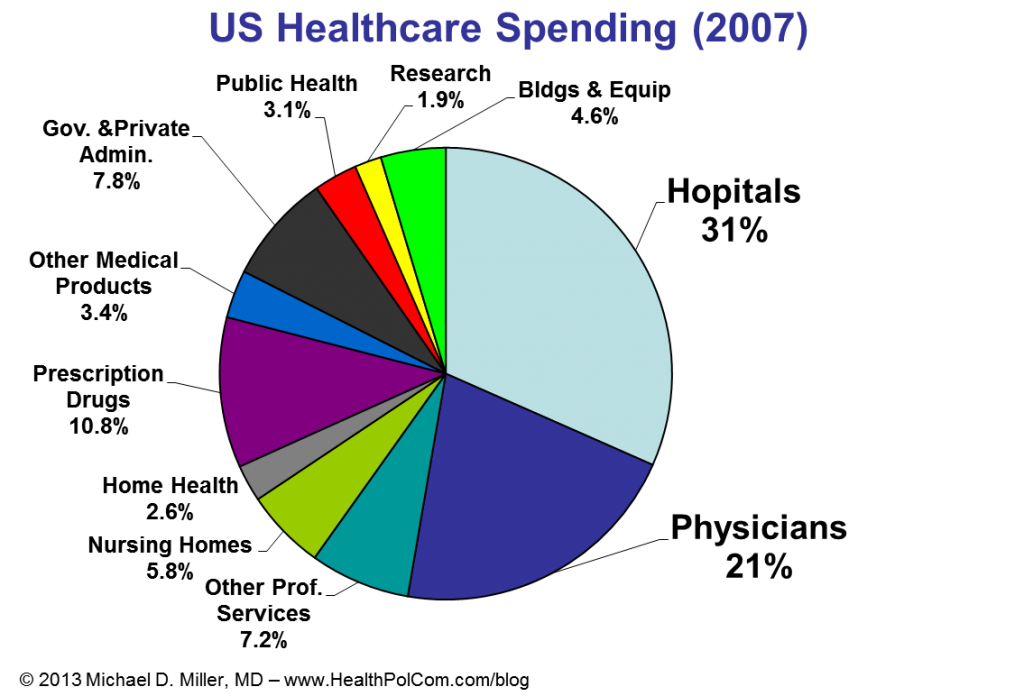
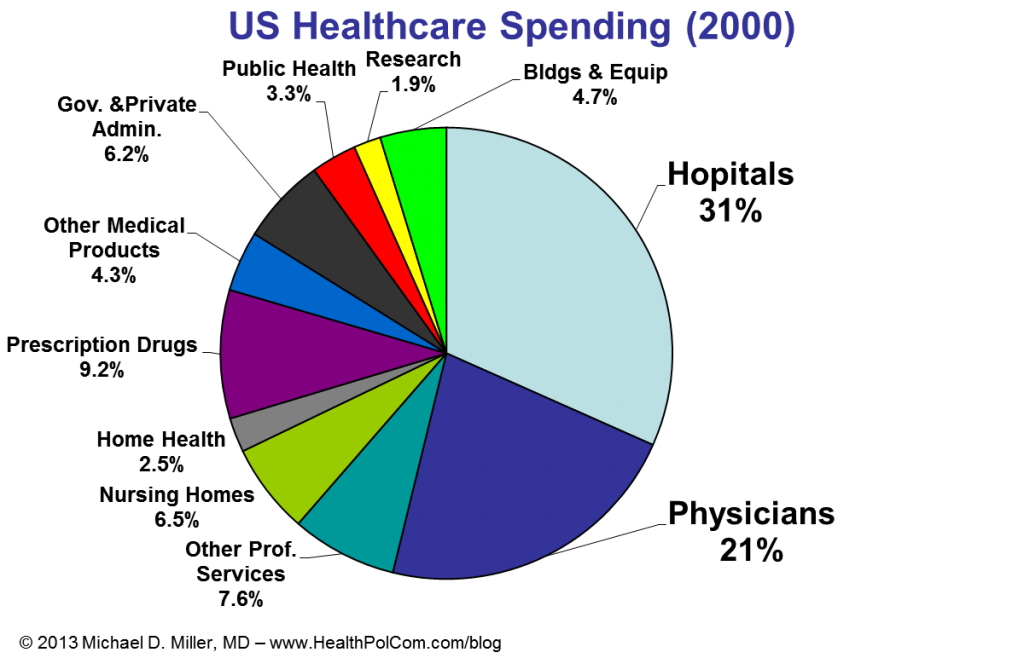
Where Healthcare Spending Funds Came From: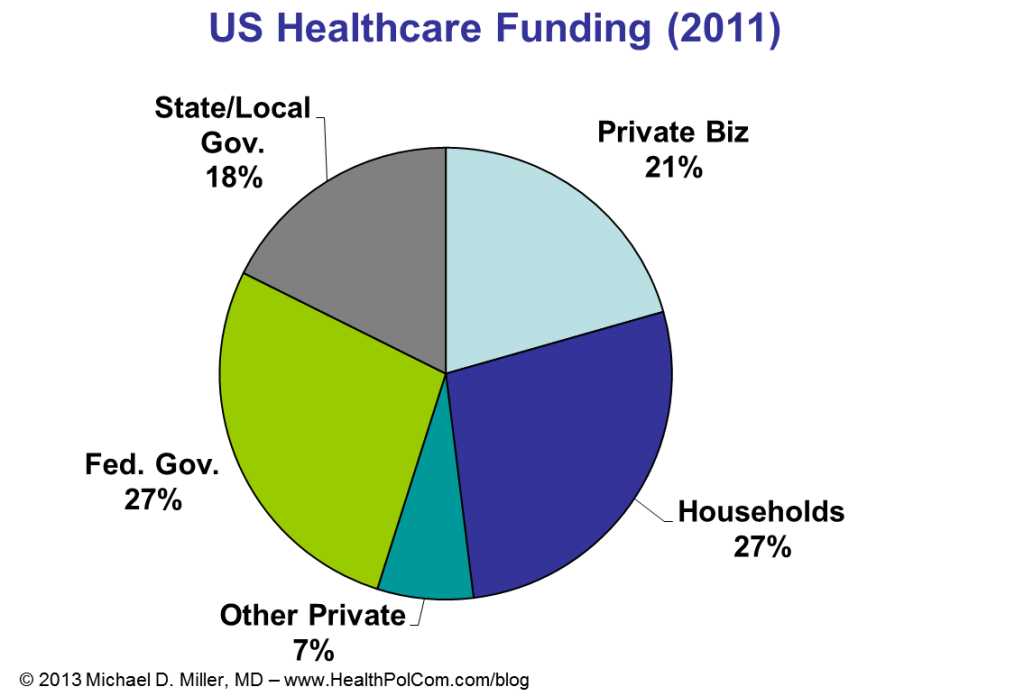
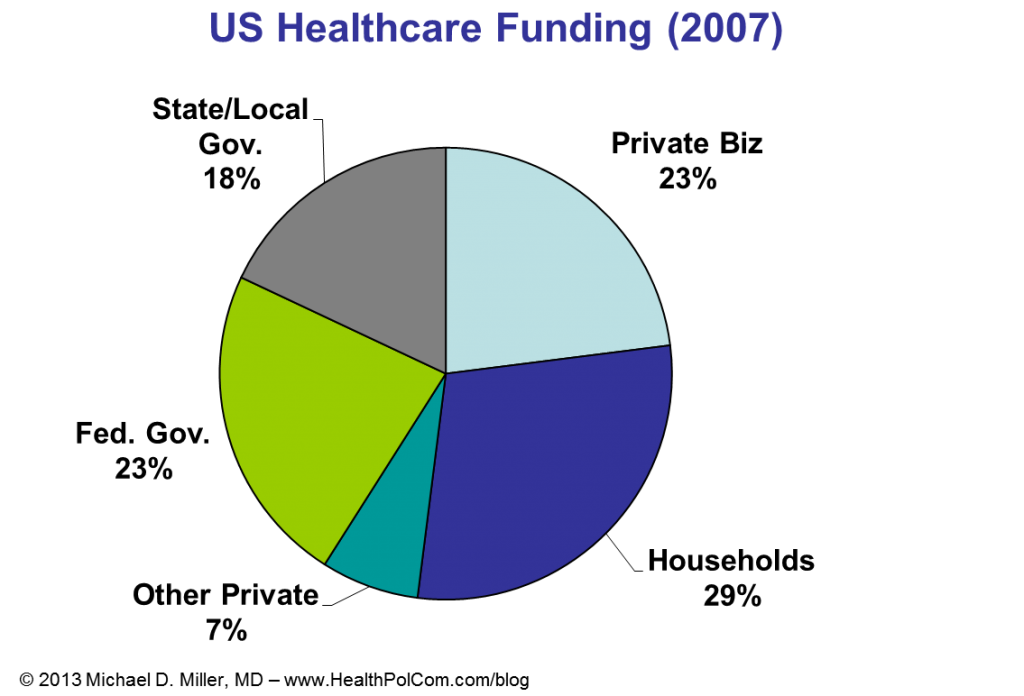
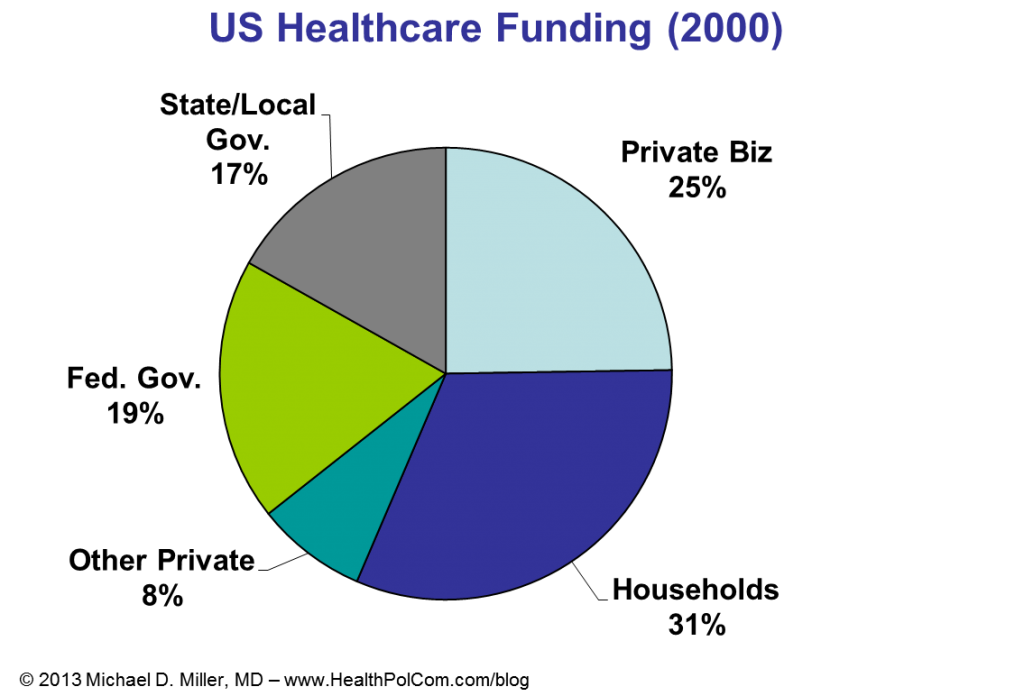 Three highlights from the Health Affairs article are:
Three highlights from the Health Affairs article are:
- The distribution of healthcare spending for various services and providers has been relatively constant despite significant growth in total and per capita spending. (See chart below)
- Growth in hospital spending slowed in 2010 and 2011 after bumping up in 2009. (Y/Y increases were 6.7% in 2009, and 4.3% and 3.9% in 2010 and 2011, compared to 3.9% for total National Health Expenditures for each of these years over the prior year.) The Health Affairs article notes that “The growth in use of hospital services remains low, with the number of inpatient days declining by 1.1 percent in 2011, following a decline of 1.6 percent in 2010, and the number of outpatient visits increasing by 0.7 percent, a slowdown from the increase of 1.5 percent in 2010.”
- The percentages of healthcare spending coming from private businesses and households has decreased. This probably reflects higher government spending for the new Medicare prescription drug benefit and increased Medicaid enrollment during the economic downturn being only partially offset by private insurers shifting costs to individuals.
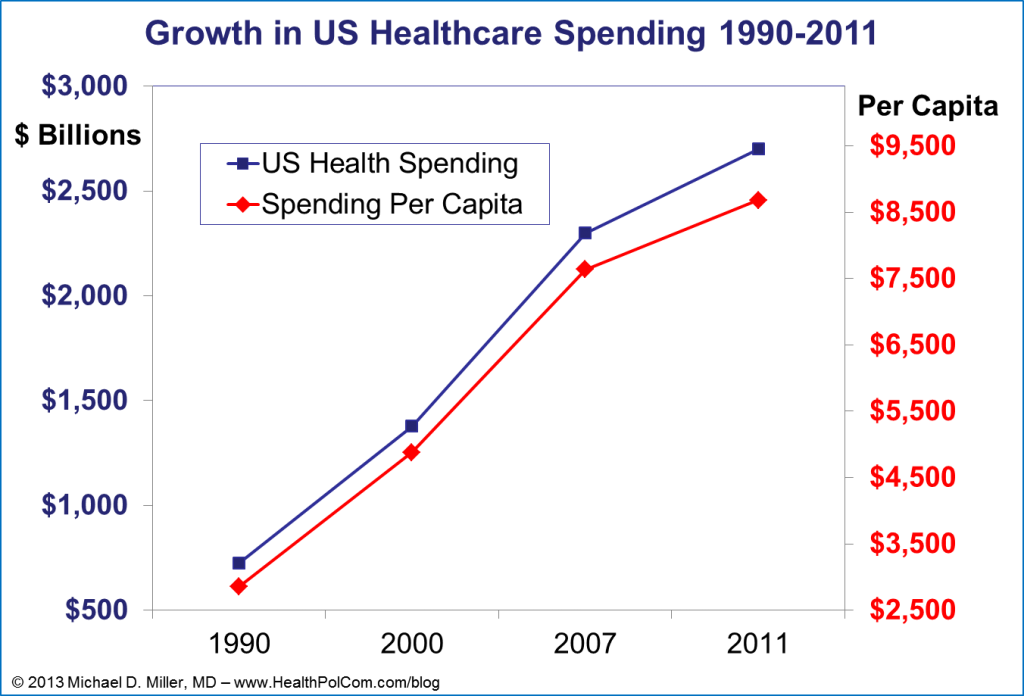 Effects of Health Reform (ACA)
Effects of Health Reform (ACA)
While only a few of the ACA’s provisions went into effect during 2010 and 2011, there has been much speculation as to how (and how much) the ACA has or will change healthcare spending. The Health Affairs article includes data about changes in private insurance enrollment from the requirement that companies offer coverage for dependents up to age 26. But it also points out that this age group is relatively inexpensive to insure so it probably didn’t produce great changes in spending. However, Medicaid coverage and spending did change significantly, with more people in Medicaid programs due to the economic downturn, and the states’ costs increasing with the end of the temporary bump in Federal matching rates.
The Health Affairs authors don’t speculate about is how healthcare providers and organizations are shifting their operations and attitudes in anticipation of various of various new Federal programs, such as the Shared Savings Program for ACOs, value based payments, EMR Meaningful Use incentives/penalties, and penalties for avoidable adverse events. With private payers expanding clinical and economic accountability for healthcare providers through various payment innovations that are aligned with Medicare’s policies, the acceleration of system-wide transformations may be greater than projected – and lead to greater and earlier cost savings. I have written about the factors that may be moderating healthcare spending growth, and believe that the relatively slower rate in hospital spending and inpatient days reported in the Health Affairs article are the leading edge of this trend. However, as hospitals purchase physician practices they may establish local market power that limits competition, and the prices charged to Medicare by these acquired practices could increase as they shift from the category of clinicians’ office to hospital outpatient facilities. Conversely, to the extent that these integrated healthcare systems assume risk for savings and quality performance – probably with payments involving episodes or bundles of care – then these concerns will be diminished, although not eliminated if they can still limit price and quality competition and comparisons.
Looking Forward to Future Health Spending
The Health Affairs article speculates a bit about where healthcare spending is heading in the near future. And, as is typical when trying to predict the future, the article doesn’t completely agree with what others have written. Not to be critical of the Health Affairs authors, (or professionals at the Congressional Budget Office or other organizations), but modeling is hard. To illustrate how difficult this task is – and how it can lead to different predicted outcomes even with lots of historical data to work with – below is a map showing the multiple predicted paths for 2012 Hurricane Sandy.
Communicating the meaning of the latest data can also be confusing. For example, the New York Times and the Wall Street Journal delivered significantly different verdicts on the meaning of the Health Affairs article. The Times’ headline declared, “Growth of Health Spending Stays Low” and quoted the Medicare agency’s chief actuary as saying “’I am optimistic. There’s lot of potential. More and more health care providers understand that the future cannot be like the past, in which health spending almost always grew faster than the gross domestic product.’” Conversely, the Journal’s headline was “Health-Cost Pause Nears End,” and the article noted that the Health Affairs article, “…showed that the amount of spending to treat individuals, as opposed to spending on administration and insurance premiums, began to rise in 2011.” It then concluded that this was “signaling that cutbacks in health spending hadn’t become permanent.”
Predicting the Future is Easy
Predicting the future is easy. Accurately predicting the future is difficult. 2014 will almost certainly bring significant changes to how many people in the US get health insurance, how healthcare organizations deliver care, and how Medicare and Medicaid operate. Like CMS’ chief actuary, I am optimistic, even though I also recognize that he is also correct in that, “The jury is still out whether all the innovations we’re testing will have much impact.” But I also see his actuarial caution as a reason for optimism because I believe that modeling based upon few precedents causes projections to be overly cautious, which should mean that actual savings will be greater than expected.

Do the 2011 HC expense data include dental care and administration spending? If not, how would you estimate these expenses.
Thanks.
Genrich Krasko